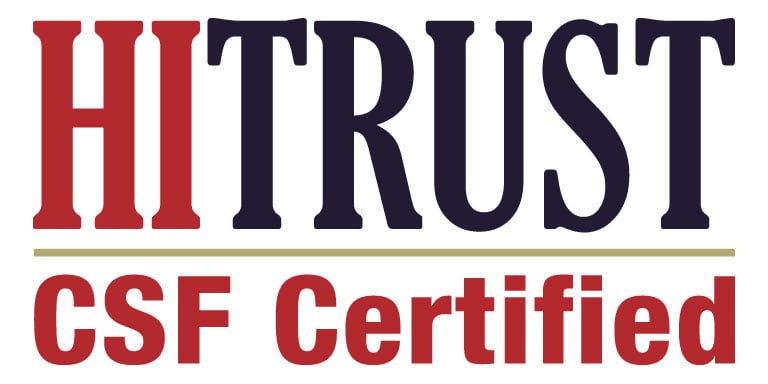.jpg)
The efforts to generate and gather healthcare data have paid off. Approximately 61% of Americans are using wearable devices to track their health1, nearly 87% of doctors use electronic health record (EHR) systems in their offices2, and as of May 2018, there are more than 96 thousand clinical trial sites in the US generating clinical data3. These millions of data points mean that as much as 30% of the entire world’s stored data is generated in the healthcare industry4. Due to this abundance, we are on the precipice of making precision medicine a reality by better understanding disease and wellness at the individual patient level.
But despite the advances in data generation, collection, and technology, we have not yet achieved the goal of precision medicine– ensuring the right patient received the right treatment at the right time. This data and technology is ultimately unusable if it is not easily accessible shareable and actionable by stakeholders across the healthcare ecosystem. The true value of massive healthcare data comes from combining it in unique and interesting ways that give researchers, care managers, and physicians a more holistic view of the patient. Data needs to be current and have the ability to be shared across organizations, from biopharma all the way to point-of-care, to have a true impact on health outcomes and costs that the industry has come to expect.
Challenges facing healthcare data accessibility
The healthcare market continues to consolidate, as evident by the recent acquisitions of Aetna by CVS and Flatiron by Roche, among others. While the market is becoming more integrated, healthcare data is still often fragmented and inaccessible within and across healthcare organizations. Data is collected at so many points along the patient journey, from a physician’s office to a laboratory to a hospital visit. While siloed data is not a new phenomenon, it has yet to be solved and continues to impact how care is delivered from biopharma, to health plans, to providers.
The healthcare data being collected is also in many different formats. Unstructured data, in particular, makes up nearly 80% of all healthcare data5. Unstructured data is the type that generally is text heavy, for instance doctor’s notes, files, documents, or call logs. This data can be incredibly rich, but even with recent efforts of Natural Language Processing (NLP), much of the value of the data is still locked within these unstructured data sets.
The key to gathering new insights from data in healthcare is exploring novel combinations that make unlock new knowledge of biology or behavior. But mining disparate data can be difficult. Not only are there new data types emerging that need to be standardized and more widely integrated with traditional data, but there are also unclear data definitions and inconsistencies in the measures. These formatting issues can make it difficult to data to travel throughout the ecosystem and be integrated in systems across the value chain.
Emerging collaborations and initiatives
The key to data interoperability is collaboration. Several government agencies and public-private partnerships are now sending clear signals that making healthcare data available is a priority, announcing new initiatives around data access and use.
Last month, the Centers for Medicare and Medicaid Services (CMS) Administrator Seema Verma announced a new Data Driven Patient Care Strategy as part of the MyHealthEData initiative. The new approach “strives to make CMS data more accessible and usable in a secure manner”6. The strategy focuses on ensuring patients have access to their data through the Blue Button 2.0 initiative, increasing the volume of data available with the release of Medicare Advantage data, and how that data can be shared with other healthcare stakeholders through encouraging API integrations. This is approach of balancing privacy and security with data access is an excellent example of the mindset that should be used around data sharing.
There are also some encouraging signs from the private sector. Recently, Flatiron surprised many in the industry when in inked a three-year deal with Bristol-Meyers Squibb around real-world data, despite its recent acquisition by Roche. This collaborative spirit in the competitive world of biopharma certainly bucked the traditional model.
There are also a number of data consortia being built by patient foundations and academic medical centers. For example, the Multiple Myeloma Research Foundation’s (MMRF) CoMMpass study brought together academia, pharmaceutical companies, providers, and data analysts to generate insights from the largest longitudinal data set for multiple myeloma. Health systems are also trying to streamline their data collection—Kaiser Permanent’s unified health record program, HealthConnect, is estimated to have reduced costs by $1 billion since 2013 and helped physicians base their decisions on more robust analytics6.
While the seeds have been sown for precision medicine with rich data and groundbreaking technology, in order to reap the true benefits, we need to continue to collaborate, share and innovate across the entire healthcare ecosystem.
[1] Nielsen. 2014. Hacking Health: How Consumers Use Smartphones and Wearable Tech to Track Their Health.
[2] Monegain, Bernie. 2015. More than 80 percent of docs use EHRs.
[3]ClinicalTrials.gov. 2018. Trends, Charts, and Maps.
[4] Huesch, Marco and Timothy Mosher. 2017. Using it or Losing It? The Case for Data Scientists Inside Health Care.
[5] SyTrue. 2015. Why Unstructured Data Holds the Key to Intelligent Healthcare Systems.
[6] CMS.gov. 2018. Data Driven Patient Care Strategy.
[7] Stanford Medicine. 2017. Stanford Medicine 2017 Health Trends Report: Harnessing the Power of Data in Health.

